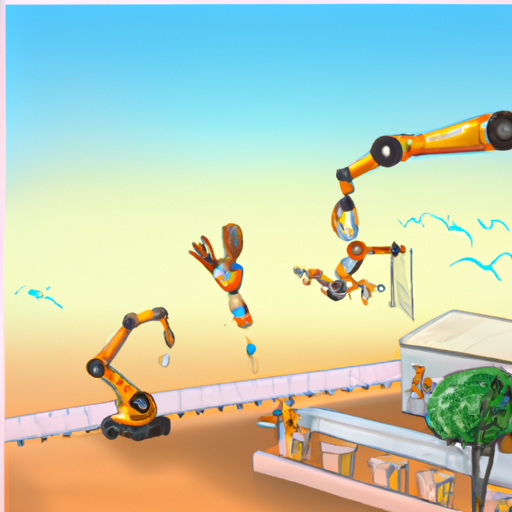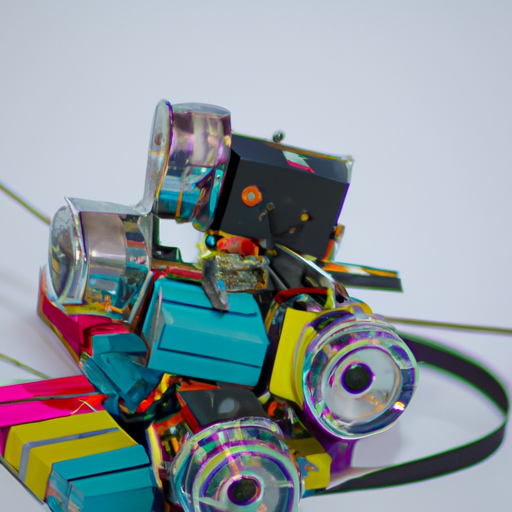-
Table of Contents
- Exploring the Benefits of Autonomous Space Robotics for Future Exploration Missions
- Examining the Latest Advances in Space Robotics and Their Impact on Space Exploration
- How Artificial Intelligence is Revolutionizing Space Robotics and Exploration
- The Role of Space Robotics in Deep Space Exploration and Colonization
“Exploring the Final Frontier: Unlocking the Potential of Space Robotics and Exploration”
Exploring the Benefits of Autonomous Space Robotics for Future Exploration Missions
The exploration of space has been a long-standing ambition of humanity, and the development of autonomous space robotics has been a key factor in making this possible. Autonomous space robotics are robots that are capable of performing tasks without direct human control. These robots are used in a variety of space exploration missions, from planetary exploration to satellite servicing. Autonomous space robotics offer a number of advantages over traditional manned missions, including increased safety, cost savings, and increased mission flexibility.
One of the primary benefits of autonomous space robotics is increased safety. Autonomous robots can be programmed to perform tasks in hazardous environments, such as extreme temperatures or radiation, without putting human lives at risk. This allows for more ambitious exploration missions, as robots can be sent to explore areas that would be too dangerous for humans. Additionally, autonomous robots can be programmed to respond to unexpected events, such as a sudden change in environment or a malfunctioning system, without the need for direct human intervention.
Autonomous space robotics also offer cost savings. By eliminating the need for human astronauts, the cost of space exploration missions can be significantly reduced. Additionally, autonomous robots can be programmed to perform multiple tasks, reducing the need for multiple manned missions. This can result in significant cost savings over the course of a mission.
Finally, autonomous space robotics offer increased mission flexibility. Autonomous robots can be programmed to respond to changing conditions, allowing for more dynamic exploration missions. Additionally, autonomous robots can be programmed to perform multiple tasks, allowing for more efficient use of resources. This can result in more efficient exploration missions, as robots can be used to explore multiple areas in a single mission.
In conclusion, autonomous space robotics offer a number of advantages over traditional manned missions. Autonomous robots can be programmed to perform tasks in hazardous environments without putting human lives at risk, resulting in increased safety. Additionally, autonomous robots can be programmed to perform multiple tasks, resulting in cost savings and increased mission flexibility. As technology continues to advance, autonomous space robotics will become increasingly important for future exploration missions.
Examining the Latest Advances in Space Robotics and Their Impact on Space Exploration
Space robotics has been a rapidly advancing field in recent years, with a number of new technologies being developed to enable more efficient and effective space exploration. This article will examine the latest advances in space robotics and their impact on space exploration.
One of the most significant advances in space robotics has been the development of autonomous robotic systems. Autonomous robots are capable of performing tasks without direct human control, allowing them to explore and operate in environments that are too hazardous or difficult for humans to access. Autonomous robots can be used to explore distant planets, moons, and asteroids, as well as to perform maintenance and repair tasks on spacecraft.
Another major advance in space robotics has been the development of robotic arms and manipulators. These robotic arms are capable of performing a variety of tasks, such as manipulating objects, assembling components, and performing repairs. Robotic arms can be used to assemble and repair spacecraft, as well as to collect samples from distant planets and moons.
In addition to robotic arms and manipulators, space robotics has also seen the development of robotic rovers. Robotic rovers are capable of traversing the surfaces of planets and moons, allowing them to explore and collect data from these distant worlds. Robotic rovers can also be used to perform maintenance and repair tasks on spacecraft.
Finally, space robotics has seen the development of robotic satellites. Robotic satellites are capable of performing a variety of tasks, such as monitoring the environment, collecting data, and relaying communications. Robotic satellites can be used to monitor the Earth’s atmosphere, as well as to provide communications between spacecraft and ground stations.
The advances in space robotics have had a significant impact on space exploration. Autonomous robots, robotic arms and manipulators, robotic rovers, and robotic satellites have all enabled more efficient and effective exploration of distant worlds. These technologies have allowed us to explore further and faster than ever before, and have opened up new possibilities for space exploration.
In conclusion, the advances in space robotics have had a major impact on space exploration. Autonomous robots, robotic arms and manipulators, robotic rovers, and robotic satellites have all enabled more efficient and effective exploration of distant worlds. These technologies have allowed us to explore further and faster than ever before, and have opened up new possibilities for space exploration.
How Artificial Intelligence is Revolutionizing Space Robotics and Exploration
The exploration of space has been a long-standing ambition of humanity, and the development of robotics has been a key factor in making this possible. In recent years, the introduction of artificial intelligence (AI) has revolutionized the field of space robotics and exploration. AI has enabled robots to become more autonomous and efficient, allowing them to explore space more effectively and with greater accuracy.
AI has enabled robots to become more intelligent and capable of making decisions on their own. This has allowed them to navigate complex environments and complete tasks with greater accuracy and efficiency. For example, AI-enabled robots can autonomously navigate hazardous terrain, such as the surface of Mars, and collect data that would otherwise be impossible to obtain. AI has also enabled robots to be more adaptive and responsive to their environment, allowing them to adjust their behavior in response to changing conditions.
AI has also enabled robots to be more reliable and resilient. AI-enabled robots can detect and respond to potential problems before they become serious, allowing them to operate more safely and effectively. This has enabled robots to explore more distant and hostile environments, such as the outer reaches of the solar system. AI has also enabled robots to be more efficient, allowing them to complete tasks faster and with greater accuracy.
AI has also enabled robots to be more cost-effective. AI-enabled robots can be programmed to complete tasks with minimal human intervention, reducing the need for expensive and time-consuming human labor. This has allowed space exploration missions to be completed more quickly and cost-effectively.
In conclusion, AI has revolutionized the field of space robotics and exploration. AI-enabled robots are more autonomous, intelligent, reliable, and cost-effective, allowing them to explore space more effectively and with greater accuracy. As AI technology continues to develop, it is likely that robots will become even more capable and efficient, allowing us to explore even further into the unknown.
The Role of Space Robotics in Deep Space Exploration and Colonization
Space robotics has become an increasingly important tool in deep space exploration and colonization. As humans continue to push the boundaries of space exploration, robots are becoming an invaluable asset in the exploration of the unknown.
Robots are able to explore areas that are too dangerous or too distant for humans to reach. They can be used to explore the surfaces of planets and moons, collect samples, and even build structures. They can also be used to explore the depths of space, such as the outer reaches of the solar system.
Robots are also able to perform tasks that would be too tedious or time-consuming for humans. For example, robots can be used to construct habitats and other structures on distant planets and moons. They can also be used to mine resources, such as minerals and water, from the surfaces of planets and moons.
Robots can also be used to explore the environment of a planet or moon. They can be used to measure the temperature, pressure, and composition of the atmosphere, as well as the composition of the soil and rocks. This information can be used to determine the suitability of a planet or moon for human habitation.
Robots can also be used to explore the interior of a planet or moon. They can be used to map the interior of a planet or moon, as well as to detect any potential hazards. This information can be used to determine the safety of a planet or moon for human exploration and colonization.
Finally, robots can be used to explore the space between planets and moons. They can be used to detect and map asteroids, comets, and other objects in the solar system. This information can be used to determine the best routes for deep space exploration and colonization.
In conclusion, space robotics is an invaluable tool in deep space exploration and colonization. Robots can be used to explore areas that are too dangerous or too distant for humans to reach, as well as to perform tasks that would be too tedious or time-consuming for humans. They can also be used to explore the environment of a planet or moon, as well as to explore the interior of a planet or moon. Finally, robots can be used to explore the space between planets and moons. All of these tasks are essential for deep space exploration and colonization.



